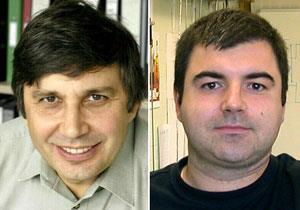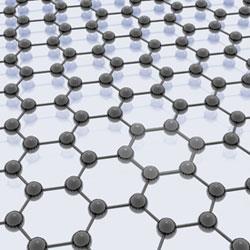Andre Geim and Kostya Novoselov are this year's winners for discovering that peeling sticky tape from graphite could produce an amazing new material
This year’s Nobel prize for physics has been awarded to Andre Geim and Kostya Novoselov for the discovery of graphene - single-atom-thick layers of carbon. The researchers from the University of Manchester, UK, were awarded the prize, worth SEK10 million (?937,000), for their finding that flakes of the material can be pulled from graphite using sticky tape.
The discovery was made by chance in what Novoselev describes as a ’fun Friday afternoon project’. But it quickly spawned a huge field of research, as the unique properties of graphene were explored and exploited. ’Graphene is a marvellous material to work with,’ says Novoselov. ’Anybody can do it - which is probably why it has spread so widely so quickly.’

Graphene combines a huge variety of physical and chemical properties in a single material, adds Novoselov. This makes it suitable for a wide range of applications - not least in electronics, sensing and fundamental studies of the way electrons behave when confined in two dimensions.
Alan Usher, director of the Centre for Graphene Research in the UK, says he is not surprised by the award. ’For decades graphene was seen as a purely theoretical interest because in the 1930s it was predicted that it couldn’t be stable,’ he says. ’But Geim and Novoselov decided not to believe the theory and just tried it for themselves.’ He adds that the simplicity of the ’sticky-tape’ technique they employed only makes the discovery more remarkable: ’That’s the kind of science that really deserves recognition.’

Novosolev and Usher agree that the future of graphene technology lies in being able to make large scale devices. They point towards work by Jong-Hyun Ahn and Byung Hee Hong of Sungkyunkwan University, Korea, who made a 30-inch transparent graphene film and a functional touchscreen display earlier this year. ’That pretty much enables any kind of device fabrication,’ says Usher.
Novoselov is enthusiastic about the future for graphene research: ’We have a fantastic time playing with graphene,’ he says. ’Every day we go into the laboratory something new comes out.’
Phillip Broadwith






No comments yet